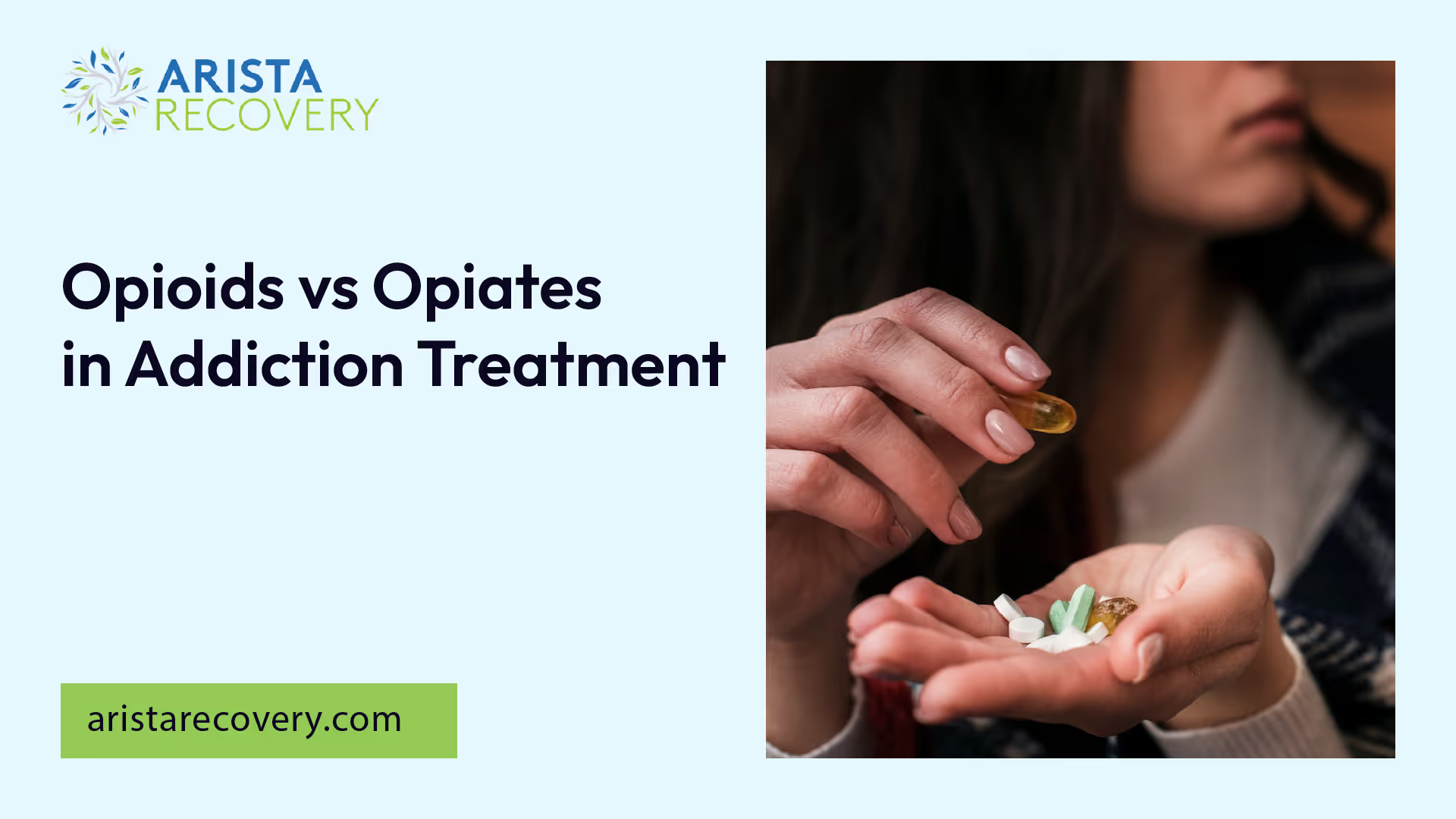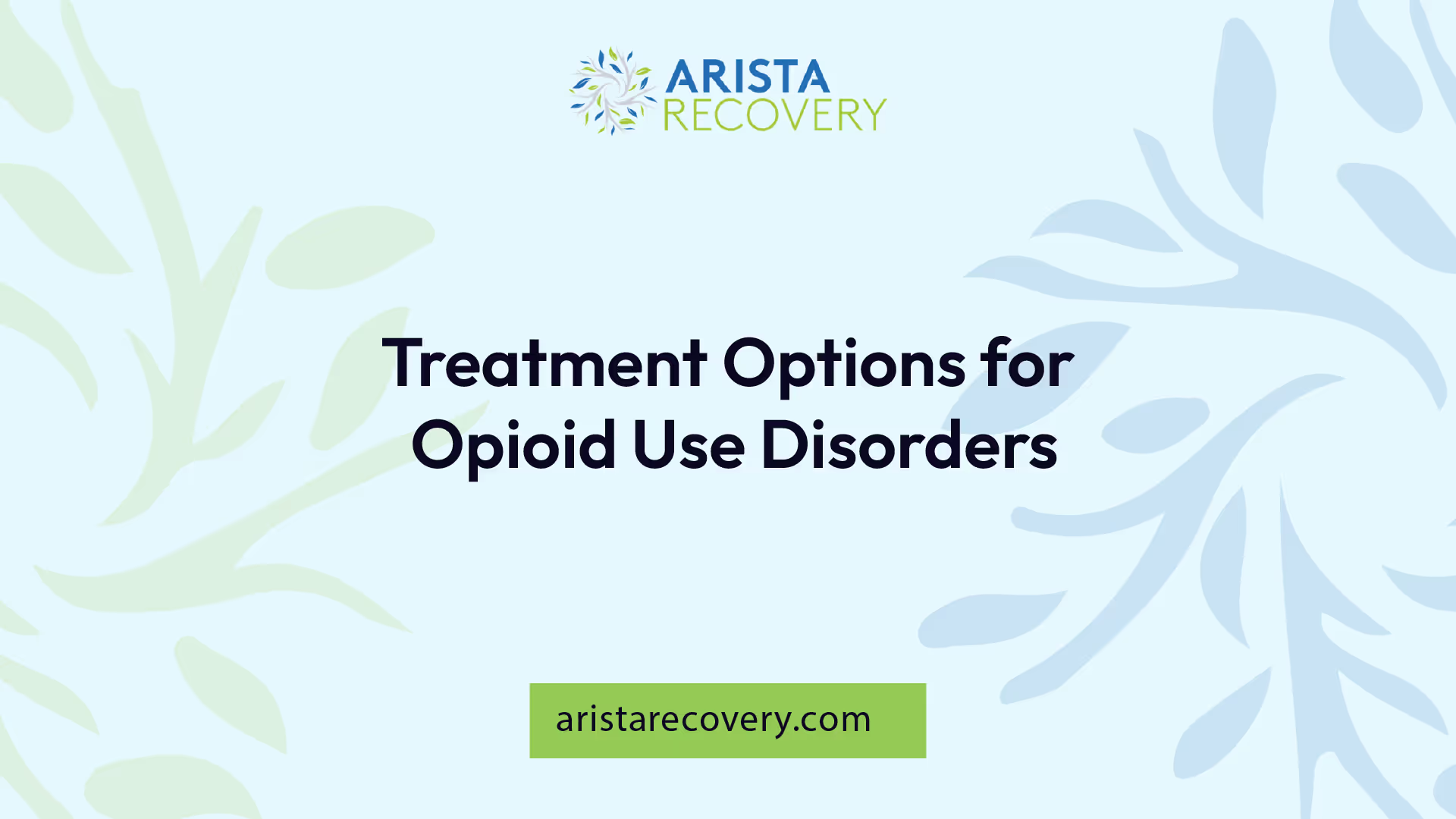Opioids vs Opiates in Addiction Treatment

Understanding Opiates and Opioids
The terms 'opiates' and 'opioids' are often used interchangeably, yet they have distinct meanings. Understanding the distinction between these two is critical to understanding their impact, especially in the context of addiction treatment.

Differentiating Opiates and Opioids
Opiates are chemical compounds extracted or refined from natural plant matter like poppy sap and fibers, while opioids are chemical compounds generally not derived from natural plant matter, often made in a lab or synthesized.
In simpler terms, opiates are derived from the naturally occurring poppy plant (Papaver somniferum) that creates the active ingredient in the drugs. On the other hand, opioids can be derived from the poppy plant, be synthetic, or be semi-synthetic.
Despite these differences, all opiates are opioids, but not all opioids are opiates. They share similar molecular structures and both have high addiction potential.
Common Examples of Opiates
Opiates are naturally occurring substances derived from the opium poppy plant. There are a few different types of opiates, including:
- Opium
- Heroin
- Morphine
- Codeine
These opiates are powerful narcotics that can cause significant physical and psychological dependence. If you or a loved one is struggling with opiate addiction, it's important to seek professional help for opioid addiction.
Examples of Opioids
On the broader spectrum, opioids include synthetic and semi-synthetic substances, along with opiates, and are designed to interact with opioid receptors in the brain. Some well-known opioids used medically in the U.S. include:
- Hydrocodone (e.g., Vicodin)
- Hydromorphone (e.g., Dilaudid)
- Oxycodone (e.g., Oxycontin, Percocet)
- Fentanyl
These opioids have a high potential for misuse and addiction, necessitating careful monitoring during medical use and appropriate treatment options for treating opioid dependence.
Understanding the differences between opioids and opiates is the first step in untangling the complex web of addiction treatment. The following sections will delve into the effects, treatment options, and risks associated with opioid use.
Effects and Side Effects of Opioids
When discussing opioids vs opiates, both share similar effects and side effects on the body. Understanding these impacts can provide better insights for those seeking help for opioid addiction.

Common Side Effects of Opioids
Opioids are associated with predictable side effects due to their pharmacological actions. These include nausea, vomiting, constipation, pruritus (itchiness), dizziness, dry mouth, and sedation. Consumption of opioids can lead to both short-term and long-term side effects, which vary from person to person and depend on various factors including the type of opioid used, dosage, and length of use.
Impact on the Body
Opioids have a profound impact on the body. They bind to and activate opioid receptors in the brain, spinal cord, and other organs. This process blocks pain signals and releases large amounts of dopamine throughout the body. The release of dopamine can reinforce the act of taking the drug, making the user want to repeat the experience.
Opioid misuse can cause slowed breathing, leading to hypoxia, a condition that results when too little oxygen reaches the brain. Hypoxia can have short- and long-term psychological and neurological effects, including coma, permanent brain damage, or death.
Immediate Effects of Opioids
The immediate effects of opioids include pain relief, relaxation, and euphoria. Some people may experience a pleasurable sense of well-being or euphoria when taking opioids [5]. However, not everyone experiences euphoria, and for those who do, there is a risk of repeatedly using the drug because of the way it makes them feel.
Long-term use of opioids can lead to harmful effects such as slowed breathing and hypoxia. For more insights into the long-term effects of opioids and options for treating opioid dependence, explore our dedicated section on this topic.
Overall, understanding the effects and side effects of opioids is crucial for anyone dealing with addiction. This knowledge can empower individuals to seek help and make informed decisions about their treatment options.
Treatment Options for Opioid Use Disorders
When it comes to grappling with opioid use disorders, there are several scientifically proven treatment options available. These typically involve a combination of medications and behavioral therapies.

Medications for Opioid Use Disorders
A cornerstone of managing opioid use disorders includes the use of specific medications. Among the most effective are methadone, buprenorphine, and naltrexone, each playing a pivotal role in the recovery process.
Methadone and buprenorphine work by binding to the same opioid receptors in the brain that opioids do, reducing cravings and withdrawal symptoms. Naltrexone, on the other hand, blocks opioid receptors and prevents the effects of opioids if they are used.
These medications are considered safe, effective, and, importantly, life-saving in the context of opioid use disorders.
Importance of Medication in Treatment
The role of medication in the treatment of opioid use disorders is crucial. These drugs help to manage the severe withdrawal symptoms that can occur upon cessation of opioid use. These symptoms can be a significant hurdle for those seeking recovery, often leading to relapse if left unmanaged.
Moreover, these medications can also help to reduce cravings, another major challenge in the journey towards recovery. By managing both cravings and withdrawal symptoms, medications provide a more stable foundation for individuals to engage in behavioral therapies and other forms of treatment.
For more information about treatment options and help for opioid addiction, visit our page on help for opioid addiction.
Role of Naloxone in Overdose
Naloxone plays a critical role in the event of an opioid overdose. It acts quickly to restore normal breathing in an individual experiencing an overdose. Given the risks associated with opioid overdose, including the potential for fatal respiratory depression, having naloxone available can be life-saving.
In fact, many harm reduction programs encourage the distribution of naloxone to individuals who use opioids, as well as their friends and family members. This ensures that it's readily available in case of an emergency.
The role of naloxone underscores the importance of prompt and effective treatment for opioid use disorders. With the right combination of medication and behavioral therapies, recovery from opioid use disorder is possible. For further information on treating opioid dependence, visit our page on treating opioid dependence.
Risks and Concerns with Opioid Use
When it comes to opioid use, understanding potential risks and concerns is vital to ensure safety and avoid complications. In this section, we will discuss the overdose and mortality rates associated with opioids, the risk of misuse and addiction, and the neonatal abstinence syndrome.
Overdose and Mortality Rates
Opioid overdose is a serious concern that can result in death. In fact, the figures are quite alarming: in 2019, nearly 50,000 people in the United States died from opioid-involved overdoses, according to the Cleveland Clinic. This crisis, often referred to as the opioid epidemic or opioid crisis, has a significant impact on public health. Consequently, there's a pressing need for effective interventions and treatments for opioid dependence.
Misuse and Addiction
Misuse of prescription opioids can lead to a substance use disorder (SUD) and addiction. This condition is characterized by compulsive drug-seeking behavior and changes in the brain. The withdrawal symptoms upon cessation of opioid use can be severe, but medications and behavioral therapies are available for treatment [4]. It's crucial for anyone struggling with opioid addiction to seek professional help for opioid addiction.
Furthermore, the National Institute on Drug Abuse states that prescription opioids and heroin are chemically similar, leading some individuals to transition from prescription opioids to heroin due to availability and cost. Data from 2011 indicated that 4 to 6 percent of those misusing prescription opioids switched to heroin.
Neonatal Abstinence Syndrome
A particularly concerning consequence of opioid use is neonatal abstinence syndrome. Approximately 50% of babies develop this condition when exposed to opioids while in the uterus. These babies can go through drug withdrawal after birth, experiencing issues such as excessive crying, fever, sweating, trembling, vomiting, diarrhea, and more [2].
Healthcare providers generally avoid prescribing opioids to pregnant people, as the fetus can become dependent on opioids. Extreme caution should be used if considering breastfeeding while taking opioids, as they can cause life-threatening issues for the baby.
Understanding the risks and concerns associated with opioid use is an important step towards preventing misuse and minimizing harm. It's crucial for individuals, families, and healthcare providers to be aware of these issues and to seek appropriate help when needed.
Medical Use and Misuse of Opioids
In the context of the 'opioids vs opiates' discussion, it is important to understand both the medical uses and the potential for misuse when it comes to opioids.
Legal Prescription of Opioids
Prescription opioids are a class of drugs often used in medicine to treat moderate to severe pain, as well as conditions such as coughing and diarrhea. They contain chemicals that relax the body and can provide pain relief. When legally prescribed by a doctor and used as directed, opioids can effectively alleviate symptoms associated with an illness, injury, or surgical procedure. However, one must bear in mind that opioids can be highly addictive, and overdoses and death are common [4].
Illicit Use of Opioids
Misuse of prescription opioids can take many forms, including swallowing the medicine in a manner not directed by the doctor, crushing pills to inject or snort the drug, and dissolving the powder in water to inject into a vein. Both legally prescribed and illegal opioids may cause euphoria, a pleasurable sense of well-being, in some people. Not everyone experiences euphoria when taking opioids, but for those who do, there is a risk of repeatedly using the drug because of the way it makes them feel. For those struggling with opioid misuse, there are resources available to provide help for opioid addiction.
Transition from Prescription Opioids to Heroin
Prescription opioids and heroin are chemically similar and can produce a similar high. The data from 2011 showed that an estimated 4 to 6 percent of individuals who misuse prescription opioids switch to heroin, and about 80 percent of people who used heroin first misused prescription opioids. This transition can be due to various factors, including availability and cost. Continued misuse of prescription opioids can lead to substance use disorder (SUD) and addiction, characterized by compulsive drug-seeking behavior and changes in the brain. Withdrawal symptoms upon cessation of opioid use can be severe, but medications and behavioral therapies are available for treating opioid dependence.
Addressing Opioid Crisis
The misuse of opioids, including prescription opioids, heroin, and synthetic opioids like fentanyl, has resulted in a serious public health crisis often referred to as the opioid epidemic. The crisis has far-reaching consequences that impact individuals, families, and communities.
Public Health Impact
In 2019, nearly 50,000 people in the United States died from opioid-involved overdoses, indicating the severity of the crisis [2]. It's not merely a problem of substance misuse, but a complex health issue that requires comprehensive strategies for prevention, treatment, and recovery. For resources on treatment and recovery, refer to our articles on treating opioid dependence and help for opioid addiction.
Dosage Monitoring and Risks
Healthcare providers measure opioid dosages in morphine milligram equivalents (MME), which represent the potency of an opioid dose relative to morphine. Higher dosages are associated with a higher risk of overdose and death. Specifically, dosages at or above 50 MME per day increase the risk for overdose by at least twice compared to dosages less than 20 MME per day. Hence, it's crucial to monitor opioid dosages to reduce the risk of misuse and potential overdose.
Special Considerations for Pregnancy
Opioid use during pregnancy presents unique challenges. Approximately 50% of babies exposed to opioids in the uterus develop neonatal abstinence syndrome, experiencing withdrawal symptoms after birth [2].
Healthcare providers generally avoid prescribing opioids to pregnant individuals, as the fetus can become dependent on opioids. If opioids are used during breastfeeding, extreme caution is necessary, as they can cause life-threatening issues for the baby [2].
Addressing the opioid crisis requires a multifaceted approach, from public health initiatives to individualized treatment plans. Understanding the nuances between opioids and opiates, their effects, and the potential risks associated with their use is a critical step in combating this public health crisis.
References
[1]: https://www.oregon.gov/adpc/pages/opiate-opioid.aspx
[2]: https://my.clevelandclinic.org/health/drugs/21127-opioids
[3]: https://fpm.ac.uk/opioids-aware-clinical-use-opioids/side-effects-opioids
[4]: https://nida.nih.gov/publications/drugfacts/prescription-opioids
[5]: https://www.hopkinsmedicine.org/health/treatment-tests-and-therapies/opioids
You’re not alone in this.
When mental health challenges and addiction intersect, it can feel isolating. At Arista, we offer compassionate, evidence-based, and trauma-informed care to help you heal, grow, and move forward.
You’re not alone in this.
When mental health challenges and addiction intersect, it can feel isolating. At Arista, we offer compassionate, evidence-based, and trauma-informed care to help you heal, grow, and move forward.
Support that moves with you.
You’ve taken a brave first step. At Arista Recovery, we’re here to help you continue with best-in-class care designed for long-term healing and support.
.webp)






